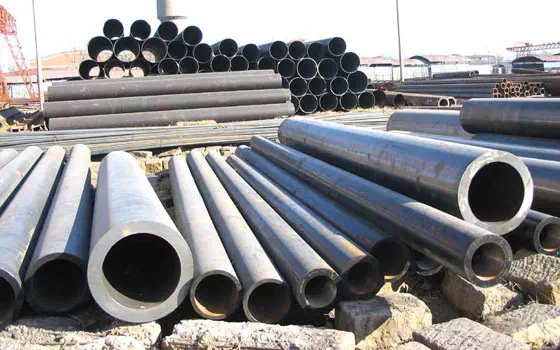Welcome to Zhishang Steel Co., Ltd.
TEL: (Gavin) +86-15665898999 | Email : info@zhishangsteel.com
The alloying principle of low-alloy high-strength steel mainly uses solid volume strengthening, fine crystal strengthening and precipitation strengthening generated by alloying elements to improve the strength of steel, and uses fine crystal strengthening to reduce the effect of tough-brittle transformation temperature of steel to offset the adverse effect of carbon nitride precipitation strengthening to increase the tough-brittle transformation temperature of steel. The steel can obtain high strength while maintaining good low temperature performance.
1. High yield limit with good plasticity and toughness
The most significant feature of low alloy high strength steel is high strength. In the hot rolled or normalizing state, the strength of low-alloy high-strength steel is generally 30% to 50% higher than that of the corresponding carbon engineering structural steel. Therefore, it can withstand large loads. Engineering structures are generally large or large, and the weight of the component itself often becomes an important part of the load, and the strength of structural materials can significantly reduce the weight of the component and further improve its ability to bear other loads. Not only that, this good effect also greatly improves the compactness of engineering components to further improve their reliability, while reducing raw material consumption, reducing costs, and saving resources.
The elongation of low-alloy high-strength steel is 15% ~ 23%, and the impact absorption energy > at room temperature. 34 J, with good plasticity and impact resistance, can avoid brittle fracture when impacted; At the same time, the process of cold bending and welding is easy to carry out. In addition, the brittle conversion temperature of low-alloy high-strength steel is low, and the value of E-grade steel is not less than 27 J at -40℃. This is of great significance to engineering components used in cold areas and transportation vehicles such as vehicles, ships, offshore oil platforms, vessels, Bridges, etc.
2. Good welding performance and atmospheric corrosion resistance
Welding is the most commonly used method to build engineering structures, so the steel used in engineering structures requires good welding properties. Low-alloy high-strength steel has low carbon content, low alloyed element content, good plasticity, and is not easy to produce quenching structure and cracks in the weld zone, and the addition of Ti, Nb, V, etc., can also inhibit the grain growth in the weld zone, so most of these steels have excellent welding performance, and are generally no longer heat treated after welding.
Most of the engineering structures are in service in the atmosphere or Marine environment, and a small amount of Cu, Ni, Cr, P and other elements are added to the low-alloy high-strength steel, which effectively improves the ability of the engineering structure to resist atmospheric, seawater and soil corrosion. If 0.2% ~ 0.5% copper, 0.05% ~ 0.1% phosphorus and aluminum are added, the corrosion resistance of steel can be significantly improved, of which copper and phosphorus are added at the same time.


ABOUT USOverviewThe company mainly deals in color-coated, galvanized, stainless steel pipes, stainless steel coils, stainless steel plates of various materials; hot-rolled series of rebar, medium and heavy plates, coils, I-beams, angle steels, channel steels, H-beams and other steel products and deep processing Service. (The company’s annual invent···